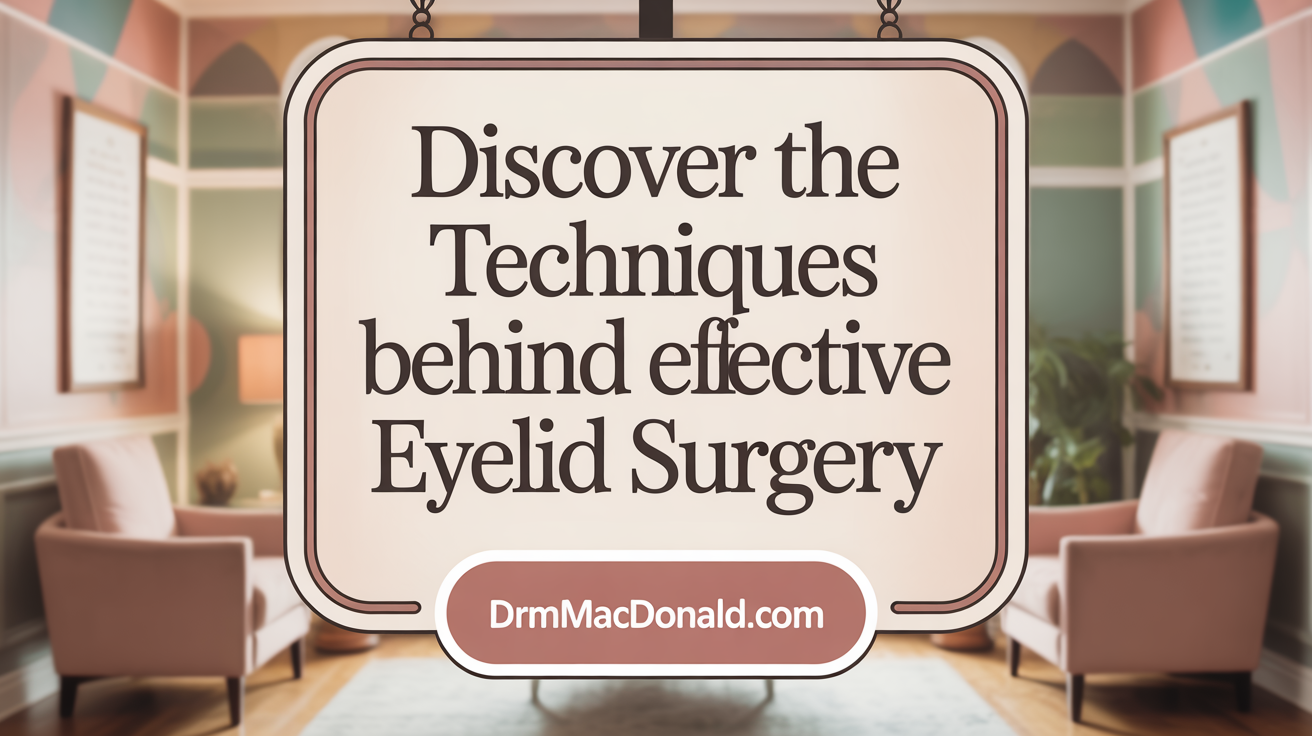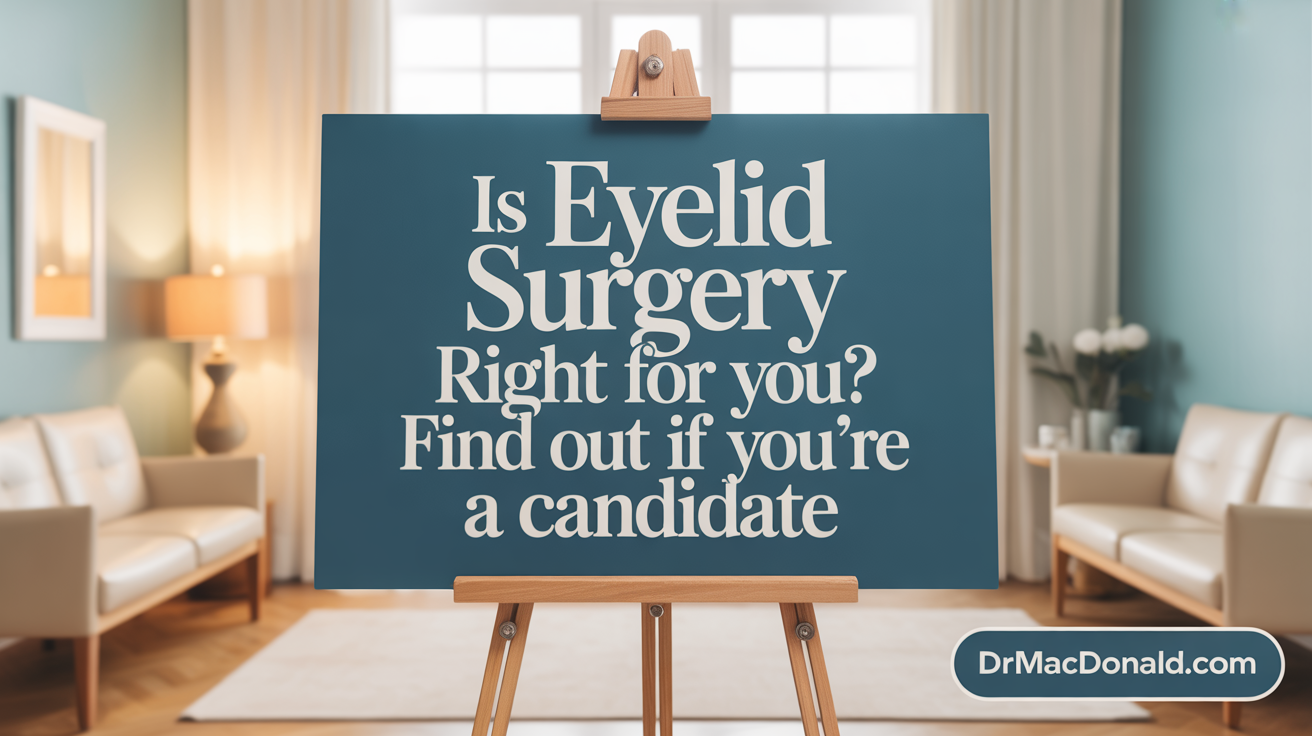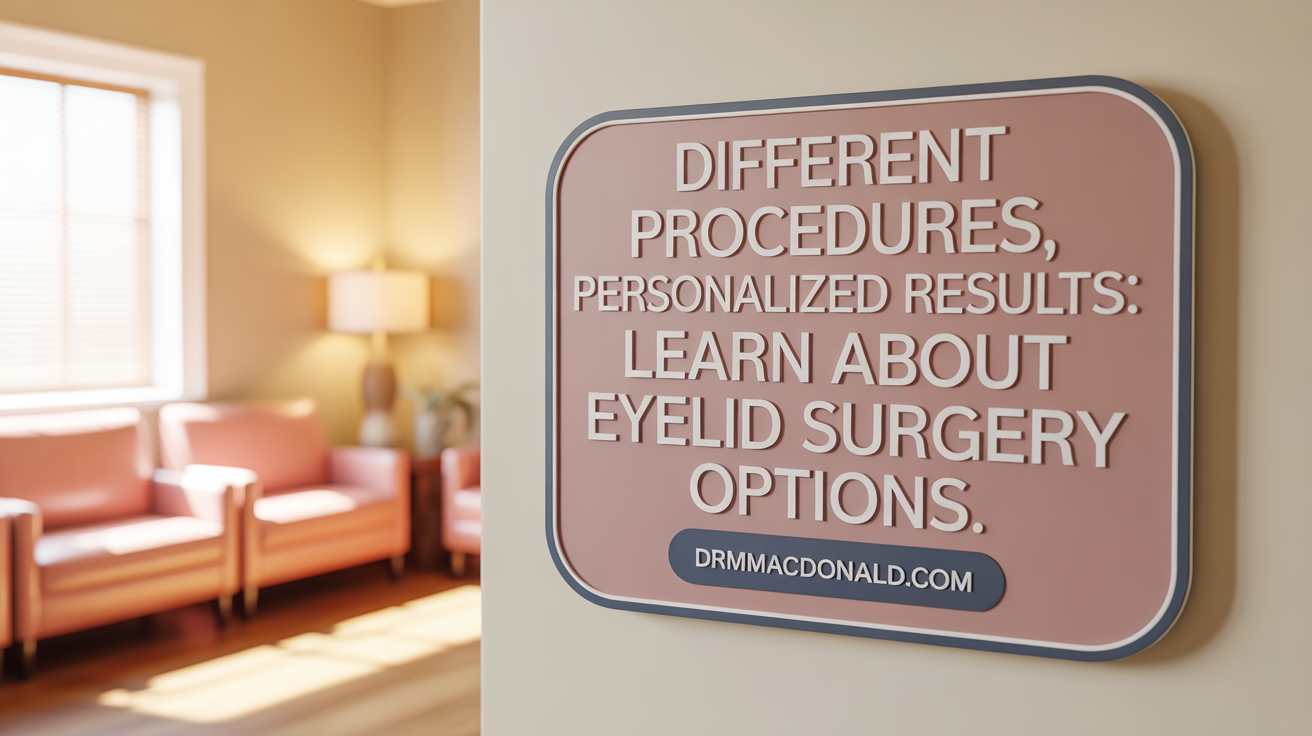Eyelid Surgery Demystified
Eyelid surgery, or blepharoplasty, offers a powerful solution to combat the visible signs of aging around the eyes and can even improve impaired vision caused by drooping lids. This guide explains the procedures, candidacy, benefits, risks, recovery, and more, empowering readers with a clear understanding of everything they need to know about eyelid surgery.
Understanding Blepharoplasty: Procedures and Techniques

What is blepharoplasty and what procedures and techniques does it involve?
Blepharoplasty, often called eyelid surgery, is a procedure aimed at improving the appearance of the eyelids by removing or reshaping excess skin, fat, and muscle. It addresses aesthetic concerns such as drooping eyelids, puffiness, and wrinkles, as well as functional issues like obstructed vision caused by sagging skin.
The surgery typically involves making precise incisions along the natural eyelid creases for upper eyelid procedures or just underneath the lash line or inside the lower eyelid for lower eyelid procedures. During the operation, excess tissue, including fat deposits and sometimes muscle, is carefully removed or repositioned. In some cases, muscles are tightened to restore a more youthful contour.
Various surgical techniques are employed depending on the specific needs of the patient. Traditional methods involve skin excision and fat removal through skin cuts, while minimally invasive approaches use sutures, fat transfer, or laser-assisted techniques to reduce scarring and recovery time.
Specialized revision techniques may be utilized to correct asymmetry or address age-related changes that occur over time. These approaches can include non-incisional methods or combining blepharoplasty with other facial procedures.
Postoperative care is essential for optimal healing and includes managing swelling and bruising with cold compresses, maintaining eye hygiene, and avoiding strenuous activities. Surveillance for potential complications such as dryness, scarring, or temporary vision disturbances is also critical.
Results from blepharoplasty can last many years, with some individuals enjoying lifelong improvements. Proper skincare and healthy lifestyle choices help prolong the benefits, although natural aging continues.
For those interested in eyelid rejuvenation, understanding these techniques allows for informed decisions and realistic expectations about outcomes and recovery timelines.
Who Should Consider Eyelid Surgery? Candidate Criteria and Eligibility

Who is a suitable candidate for eyelid surgery and what are the eligibility criteria?
Most suitable candidates for eyelid surgery are individuals experiencing excess skin, fat deposits, or drooping of the eyelids that interfere with vision or diminish their appearance.
These individuals often notice sagging eyelids or puffiness that makes them look tired or older than they feel. The ideal candidates are generally in good overall health, without underlying eye conditions such as glaucoma or retinal issues, which could complicate healing.
Candidates should also be nonsmokers, as smoking can impair tissue healing and increase risks during and after surgery. They should have realistic expectations about the results, understanding that eyelid surgery can rejuvenate appearance but does not halt natural aging.
During consultation, surgeons evaluate multiple factors including eyelid and brow position, skin elasticity, and any medical history relevant to surgery and healing processes. These assessments help confirm whether a patient is a good candidate.
A typical age range for candidates is over 35, as aging-related eyelid issues become more prominent in this bracket. However, younger individuals experiencing genetic sagging or disfigurement may also be considered.
Ultimately, the decision to proceed is based on both physical exams and personal goals, aiming to enhance both appearance and functional vision when drooping eyelids obstruct peripheral sight.
Types of Eyelid Surgery: Tailoring the Approach to Your Needs

What are the different types of eyelid surgery, including upper, lower, cosmetic, and functional approaches?
Eyelid surgery encompasses several procedures designed to enhance both the appearance and functionality of the eyelids. The most common form, blepharoplasty, involves removing or repositioning excess skin, fat, and muscle.
Upper eyelid blepharoplasty mainly targets sagging or drooping eyelids by making incisions within the natural crease of the eyelid. This reduces excess skin that can impair vision and creates a more alert, youthful look.
Lower eyelid surgery addresses issues like under-eye bags, puffiness, and wrinkles. It can be performed using an incision just below the lash line or through inside the eyelid (transconjunctival approach), minimizing visible scarring.
In cases where eyelids droop due to muscle weakness or tendon issues, ptosis repair surgery is performed to lift the eyelids by tightening or shortening muscles. This not only improves appearance but can also restore obstructed vision.
Other specialized techniques include canthoplasty, which adjusts the outer eyelid corner for better shape or function, and laser blepharoplasty for precise, minimally invasive cuts.
Functional blepharoplasty is focused on improving vision loss caused by sagging eyelids. Some procedures are covered by health insurance when they restore vision, whereas cosmetic surgeries aim solely at aesthetic enhancement.
Typically, these surgeries are performed on an outpatient basis, often under local anesthesia, allowing for quick recovery and minimal downtime.
| Type of Surgery | Focus Areas | Surgical Details | Typical Duration | Anesthesia Type |
|---|---|---|---|---|
| Upper eyelid blepharoplasty | Sagging, drooping upper eyelids | Incision in natural crease, excess skin removed, muscles tightened | 1-2 hours | Local or general |
| Lower eyelid blepharoplasty | Bags, wrinkles, puffiness | Incision below lash line or inside eyelid, fat and skin removed | 1-2 hours | Local or general |
| Functional blepharoplasty | Vision obstruction, drooping | Focused on muscle and skin, corrective, may involve ptosis repair | Varies | Local or general |
Choosing the right procedure depends on individual needs, health status, and aesthetic goals, with customized options to ensure natural-looking results.
Benefits, Expected Results, and Realistic Outcomes of Eyelid Surgery

What are the benefits and potential outcomes of eyelid surgery?
Eyelid surgery, or blepharoplasty, offers many advantages. The procedure can significantly improve the appearance around the eyes by reducing sagging skin, puffiness, wrinkles, and excess tissue. Not only does this create a more youthful and rested look, but it can also enhance vision if drooping eyelids are blocking peripheral sight. Many patients experience a boost in confidence and feel more alert and vibrant after surgery.
Results from eyelid surgery are typically long-lasting, often staying effective for five to seven years or even longer. The scars are generally well-hidden within natural eyelid creases, minimizing visible signs of surgery. Some patients choose to combine blepharoplasty with other facial procedures for comprehensive rejuvenation, further enhancing their facial harmony.
What are the realistic expectations and expected results from eyelid surgery?
Patients can expect subtle yet meaningful improvements in their appearance. The surgery is designed to create a more alert and youthful look by removing excess skin and fat and tightening tissues around the eyes. If drooping eyelids have impaired your peripheral vision, eyelid surgery can also improve sight.
It’s important to understand that results become fully visible after several weeks to months, as swelling subsides and scars heal. Typically, bruising and swelling diminish within the first two weeks, with most patients returning to normal activities within this period.
While eyelid surgery offers lasting results, natural aging continues, so some gradual changes may occur over time. Patients should maintain realistic expectations, understanding that the goal is to subtly enhance their appearance and confidence rather than achieve a perfect or permanently unchanged look.
Risks, Side Effects, and How to Minimize Complications
Eyelid surgery, or blepharoplasty, generally has a good safety profile, especially when performed by experienced surgeons. However, like any surgical procedure, it carries potential risks and side effects that patients should be aware of.
Common post-operative effects include bruising, swelling, and discomfort. These symptoms typically resolve within a few days to weeks as the healing process progresses. Applying cold packs, following the surgeon’s instructions, and limiting strenuous activities can help reduce swelling and accelerate recovery.
Serious complications, though rare, can significantly impact vision and eyelid function. These include infection, excessive bleeding, dry or irritated eyes, and abnormal scarring. In some cases, eyelids may not close properly (lagophthalmos) or can become misaligned (ectropion or entropion), which might require additional corrective procedures.
There is a small but serious risk of injury to eye muscles, nerve damage, or vision disturbances like blurred or double vision. In very rare instances, vision loss can occur due to orbital or globe hemorrhage, which requires immediate emergency treatment.
Choosing a qualified, board-certified oculoplastic surgeon is crucial. Their expertise reduces the likelihood of complications and ensures precise surgical technique.
Postoperative monitoring involves regular follow-up appointments to check healing progress, manage any unexpected symptoms, and address complications early. Patients should follow all post-surgical care instructions, including protecting the eyes from sun and wind, avoidingใช้ strenuous activity, and maintaining eye hygiene.
In summary, while eyelid surgery is safe for most, understanding potential risks and working with a skilled surgeon can help achieve the best possible outcomes with minimized complications.
Preparing for Eyelid Surgery and Navigating Recovery
How should a patient prepare for eyelid surgery?
Preparing for eyelid surgery, or blepharoplasty, involves several important steps to ensure a smooth procedure and optimal healing. Patients should first undergo a thorough medical evaluation, including eyelid measurements and laboratory tests if necessary, to determine their suitability for surgery. Full disclosure of medications, herbal supplements, and medical conditions is crucial, as some drugs like blood thinners (aspirin, ibuprofen, warfarin) need to be temporarily stopped under a doctor's guidance to reduce bleeding risks.
Smoking can impair healing, so ceasing tobacco use at least one month before surgery is highly recommended. This helps reduce complications and promotes better tissue recovery. Additionally, patients should arrange for transportation to and from the clinic, as anesthesia and post-operative medications can impair driving ability. Planning for postoperative care—such as arranging support at home or work—ensures there is help available during initial recovery.
On the day of surgery, strict adherence to preoperative instructions is essential. These may include fasting instructions, removal of jewelry and contact lenses, and maintaining good hygiene to minimize infection risk. Proper preparation helps set the stage for safe surgery and a smooth recovery process.
Exploring Non-Surgical Alternatives and Choosing the Right Surgeon
What non-surgical alternatives and options exist for eyelid lifting or improvement?
For those seeking eyelid rejuvenation without surgery, several non-invasive therapies can offer noticeable benefits. Botox injections are popular for mild eyelid lifting as they can elevate the eyebrows and reduce upper eyelid drooping by relaxing specific muscles, with results lasting around 3-4 months. Dermal fillers can immediately improve hollows, dark circles, and fine lines by adding volume to targeted areas near the eyes.
Skin resurfacing treatments such as laser procedures and microneedling with Platelet-Rich Plasma (PRP) stimulate collagen production, resulting in firmer, smoother skin over time. Ultrasound and radiofrequency devices like Thermage and Ultherapy use energy to tighten and lift the skin, providing a subtle but effective lift with minimal downtime.
These options are best suited for individuals with mild to moderate skin laxity and are often used as preventative or maintenance treatments, though their effects are temporary and may need regular sessions to sustain the results.
What factors should be considered when choosing a qualified surgeon and clinic for eyelid surgery?
Selecting the right surgeon and facility is critical for safety and satisfying results. First, ensure the surgeon is board-certified by respected organizations such as the American Board of Plastic Surgery or the American Board of Ophthalmology. Membership in professional societies like the American Society of Plastic Surgeons (ASPS) or the American Society of Ophthalmic Plastic and Reconstructive Surgery (ASOPRS) indicates a commitment to ongoing education and excellence.
Experience matters. Look for a surgeon who has performed many eyelid surgeries, including both cosmetic and reconstructive procedures, and has specific training in oculofacial plastic surgery. Reviewing a portfolio of before-and-after photos of previous patients similar to your needs can offer insight into their skill and aesthetic judgment.
The clinic should be accredited, with modern facilities that prioritize safety and adhere to strict medical standards. Comfort during consultation is also important; choose a surgeon who listens attentively, answers your questions clearly, and explains all options, including potential risks.
Finally, a surgeon who offers comprehensive preoperative assessment, personalized treatment plans, and vigilant follow-up care provides the best environment for achieving natural, satisfying results.
Making an Informed Decision About Eyelid Surgery
Eyelid surgery is a transformative procedure offering both cosmetic and functional benefits that can revitalize your appearance and improve vision. Understanding the process, candidate requirements, procedural options, benefits, and risks enables you to approach this surgery with confidence. Careful preparation, selecting an experienced surgeon, and diligent postoperative care are fundamental to achieving optimal results. Whether considering blepharoplasty or exploring non-surgical alternatives, informed choices and realistic expectations pave the way for satisfying outcomes and enhanced quality of life.
References
- Eyelid Surgery Procedure Guide | ABCS
- Blepharoplasty - Mayo Clinic
- The Ultimate Guide to Blepharoplasty - 2024 - Perfect Eyes Ltd
- The Ultimate Guide to Eyelid Surgery - Adam Scheiner MD
- Unlocking the Secrets of Blepharoplasty - Barrett Plastic Surgery
- Eyelid Surgery 101: Everything to Know for Brighter ... - NewBeauty
- A Comprehensive Guide to Eyelid Surgery - Beverly Hills Plastic ...
- A Comprehensive Guide Of Eyelid Surgery
- Ultimate Guide to Eyelid Blepharoplasty (Eyelid Lift Surgery) | UELC
- Eyelid Surgery: Everything You Should Know - Clearview Eyes
